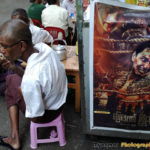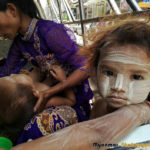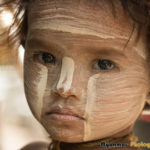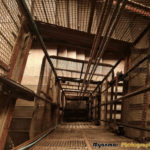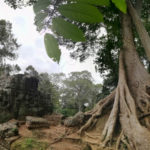Smartphone cameras have come a long way with a dramatic increase in picture quality the past few years, so much that it made point and shoot cameras almost obsolete and that smartphone photography is a now a category of its own. The latest smartphone cameras have high megapixels sensor (20+ megapixels) and new features as dual lenses to reproduce the bokeh effect.
Huawei P10 Plus, the last flagship model of the brand features a main camera with 20 MP Monochrome and a 12 MP RGB, F1.8 sensors. IPhone 7 Plus has two 12 MP sensors with 28/56 mm equivalent focal length (F1.8/2.8 aperture).
We will not discuss in this post the quality of smartphones but rather their use in travel photography.
1. Take snapshots
The most obvious of course: sometime when we travel especially we do not have always carry our camera but most of he time we carry a smartphone in our pocket. I wish I had taken the shot below with my Canon though:)
Your camera phone will be useful to document your trip (for example take a picture of a train ticket or a street sign) and will save you space on your memory cards.
2 – Keep a low profile
In travel photography especially when taking portraits or life scenes, the approach is quite critical to get the best shots as possible. I have found that sometime a smartphone can help “breaking the ice”: after the subject being more relaxed, they can be less intimated by your big camera.
Some places like museums forbid the use of a camera in their premises, so if you want to document your visit, a smartphone camera is very handy. Do not forget to deactivate the flash and shoot in manual mode (set the ISO) when you shoot indoors.
3- Geotag your pictures
You might not have a GPS chip in your camera so taking few pictures on location with your smartphone will help you later to document your trip and come back later on location especially in areas where Google Maps do not have data.
4- Look at different angles, take difficult shots
Before getting out your camera from your bag, it is sometime useful to look at composition with your smartphone to find new angles. It is useful to know at this stage what is the 35 mm equivalent of your smartphone camera: Huawei P9 lite is equivalent to a 27 mm so it will make sense to use a full frame with a 24 mm lens for example.
As they are relatively small and light smarphone can be placed in places where a camera cannot fit. An example bel0w of a staircase in yangon where my DSLR could not go through the grid.
5 – Promote your work on social media
Nowadays even in some remote locations in South-East Asia you will be surprised to get a 3G/4G signal, the data package are as well very affordable and you can have a number and several GB of data for less than USD 10. On top of that with powerful editing application such as Snapseed with which you can edit and even make promotional material. This alone justify to take your smartphone when you are on a photo expedition.
If did not bring your laptop during your trip and that your camera has Wi-Fi &NFC functions you can upload low resolution pictures to your smartphone, edit them with Snapseed and share them online.
6 – Take panoramic pictures
When shooting panoramic pictures, I tend to use most of the time my smartphone camera instead of my Canon 5DMKII as it lacks a panorama mode . It is best to take panoramic shots with the camera positioned vertically rather to horizontal to have a ratio close to 16:9. If you manage to include a person in your shot like o the picture below it is even better.
Taking a quick panoramic shot is also a way to check if its is worth taking it with a DSLR and go through the tedious task of stitching pictures.
- Meak Bochea: Celebrating Buddha’s Final Teaching in Siem Reap Cambodia - February 14, 2025
- Angkor Wat Marathon - June 22, 2024
- Timelapse calculator - June 22, 2024

